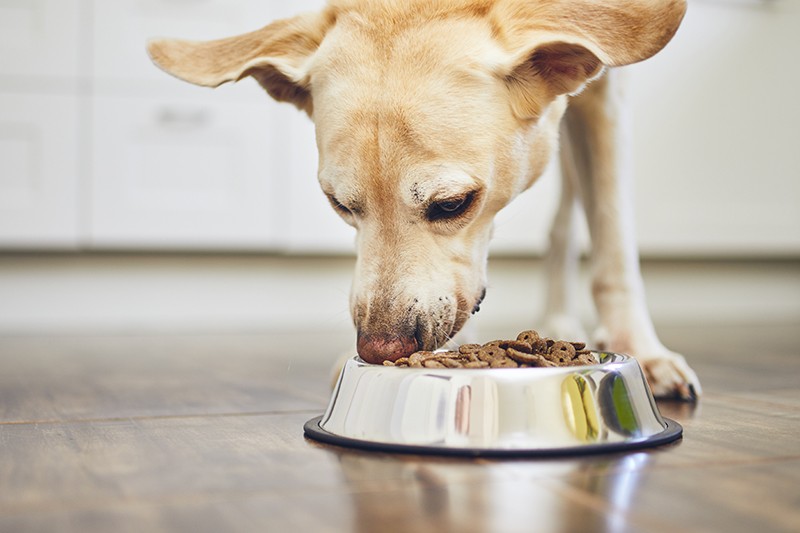If you are the lucky owner of a new dog, then you are probably wondering – how often should I feed my dog and how much food is the right amount? Luckily, feeding your dog appropriately is not as difficult as you might think.
When it comes to feeding your dog, consistency is the key. Dogs are creatures of habit, so they love the security and predictability of routine. Feeding your pet at the same time every day helps train your dog and teaches her household manners. It also makes it easier for your pet to adjust to any necessary dietary changes you may have to make over time.
Your Dog’s Stomach is A Lot Like Yours
Like humans, dogs have a simple stomach anatomy. After a dog is fed, the food is digested in the stomach and passed to the small intestine where it continues through the digestive system. Once the stomach is emptied, takes about eight to ten hours before it starts sending hunger signals to the brain again.
Therefore, you should feed your adult or senior dog at least two meals per day if you want her to be happy and comfortable all day long and through the night. You can choose to feed her every 12 hours, or you can feed her at breakfast, lunch, and dinner, so she eats her meals along with your family.
Because puppies are growing, they need all the nutrients they can get, so it is normally recommended for them to eat twice as much as the usual serving size for adult dogs. Puppies also have an abundance of energy, so they also need to be fed more frequently, at least three to five times a day to ensure they are getting enough fuel for the calories being burned.
A senior dog should be fed slightly less than a healthy adult dog simply because they have a lower energy level and thus do not burn as many calories during the day. Feeding a senior dog a little less food than a healthy adult dog helps ensure that she remains at a healthy weight.
How Much Food Should I Feed My Dog?
Just as important as your dog’s feeding frequency is the amount of food you are feeding her. This amount will vary based on several factors, including your dog’s breed, weight, and activity level.
If your dog is a healthy and active adult, then the following measurements (for dry food) are appropriate:
- Toy breeds – ¼ cups to 1 cup
- Small breeds – 1 cup to 1 2/5 cup
- Medium breeds – 2 cups to 2 2/3 cups
- Large breeds – 2 4/5 cups to 3 cups
While a lot of dog owners might prefer to fill the bowl up with food, so their dog can graze throughout the day, it is not recommended because feeding this way makes it easier for a dog to overeat and this increases the dog’s risk for developing obesity, diabetes, and certain orthopedic problems.
Routine Feeding Helps You Spot Signs of Illness Early On
Another reason why a routine feeding schedule is important for your dog is that it allows you to monitor her food intake in real time. If you notice she isn’t eating all her food or isn’t interested in eating during her usual time, then this could be a sign that she has something wrong. Scheduling her a visit with her veterinarian will help ensure you get her the treatment she needs before her condition can worsen.

